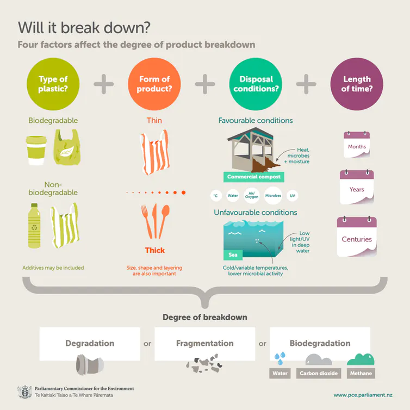

Pros
Both processes reduce the
amount of waste to landfill and subsequent pollution of groundwater and the environment.
Manufacturing these types of materials requires 65% less energy than petroleum products.
Biodegradable and compostable plastics can break down in a matter of months whereas traditional plastics do not. Ever.
Most biodegradable plastics do not use petroleum unlike traditional plastic. Extraction and refinement of oil from the earth is known to have negative impacts on the environment.
Composted materials can improve the quality of the soil and make it more fertile. This can lead to healthier plants requiring less pesticides and fertilizers.
Biodegradable & Compostable
Biodegradable refers to a material breaking down with the help of microorganisms. To be labelled a biodegradable plastic, there is no time limit set on when the product breaks down and these plastics CAN leave behind toxic residue.
Compostable refers to a material capable of breaking down into carbon dioxide, water, and biomass at the same rate as cellulose. Composta- ble plastic must also disintegrate and become indistinguishable in the compost and CANNOT leave any toxic material behind.
The new, sustainable, way to buy promotional merchandise.
Cons
Processing materials can require specialist, expensive and rare equipment that requires a lot of
energy to operate.
Plastics and biodegradable plastics are very difficult to distinguish. They can contaminate one another’s waste streams and result in increased waste volume.
Plastics do not biodegrade in the
ocean. Nu said.Biodegradable plastic costs more to produce than traditional plastics.
Whilst “compostable” looks preferable, composting can require specific conditions that are not necessarily achievable in a domestic environment. Look for the AFOR compostable logo for and “Home Composting” look for the Vincotte OK Compost logo.









